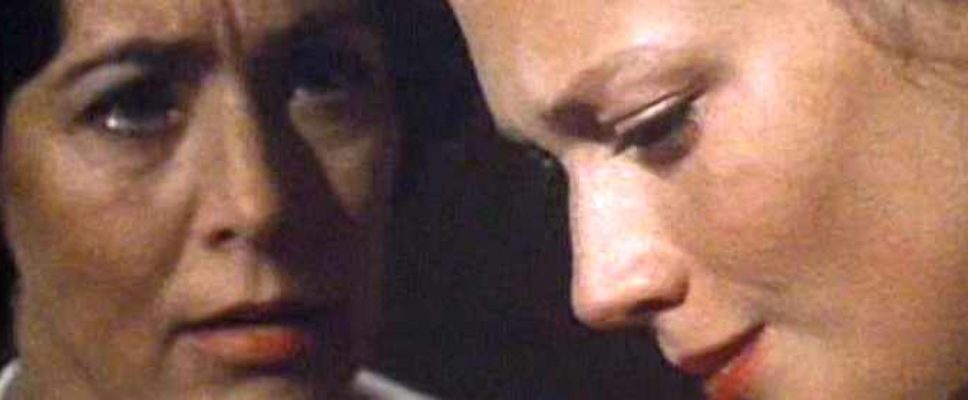Teresa Reviews “A Caribbean Mystery” (1989): Nemesis in a Pink Fluffy Sweater
Support Peschel Press at no cost to you! Buy the Joan Hickson box set.
This week we reviewed TWO versions of “A Caribbean Mystery.” Click here to read about the Julia McKenzie version.
Fidelity to text: 3 and 1/2 poison bottles.
![]() Minor characters are removed, new ones added (mainly island citizens), scenes added or deleted, the island was changed, one character’s rationale is changed, but almost all the changes are in line with the novel.
Minor characters are removed, new ones added (mainly island citizens), scenes added or deleted, the island was changed, one character’s rationale is changed, but almost all the changes are in line with the novel.
Quality of movie on its own: 4 and 1/2 poison bottles.
![]() I always deduct a 1/2 poison bottle for lack of subtitles as actors, even English ones, mumble. Seeing more of the resort island, especially the local police force and residents was a nice touch; it let the scriptwriter demonstrate that people are people the world around. Aunty Johnson (a new character for the film) provides gossip and evidence and recognizes Miss Marple as a kindred soul: an old lady deeply interested in the goings on of her fellow villagers.
I always deduct a 1/2 poison bottle for lack of subtitles as actors, even English ones, mumble. Seeing more of the resort island, especially the local police force and residents was a nice touch; it let the scriptwriter demonstrate that people are people the world around. Aunty Johnson (a new character for the film) provides gossip and evidence and recognizes Miss Marple as a kindred soul: an old lady deeply interested in the goings on of her fellow villagers.
The movie opens with Miss Marple’s house empty, dark, and the mail piling up. It’s a good opening, moving from dreary, rainy, gloomy England to the vivid sunshine and palm trees of the Caribbean. Miss Marple is enjoying an all-expenses paid vacation curtesy of nephew Raymond West to recover from a recent illness in exotic surroundings and plenty of fresh tropical air.
To further emphasize the change from England, the soundtrack changes too. I noticed those steel drums at once and the brighter, bouncier music. We also see far more of the locals than were present in the novel. Inspector Weston gets far more scenes demonstrating his quiet competence. And, remarkably, he knows who Miss Marple is!
The scriptwriters took the trouble of fleshing out Victoria as well, adding a charming scene in which Miss Marple visits Victoria’s Aunty Johnson for tea.

Another very atmospheric addition was the exhumation of Major Palgrave, overseen by Inspector Weston. It’s done late at night (I assume to slow down the gossip) and we see the coffin being dug up and hauled out. Good music matches the scene. Inspector Weston gets many more scenes interrogating various characters. He knows his business and the contrast between him and the island governor couldn’t be stronger. The governor is more interested in his stamp collection, not being bothered, and not bothering those higher up the food chain than he’s interested in seeing justice done.

This motivational improvement does not save Lucky from her fate. The actress playing Lucky was perfect. Loud, brassy, a bottle blonde, she stole every scene she was in. Supposedly she slightly resembles Molly Kendal but only if you aren’t paying attention, you’re seeing her from the back, and if it’s dark.
Molly, I’m sad to say, was a tepid drip of water compared to Lucky.

This being a Christie mystery, that richer, stupider model was already waiting in the wings.

 Joan Hickson was wonderful as always. She expresses her boredom listening to Major Palgrave so well and her sparring with Mr. Rafiel is a pleasure to watch. And yes, you get to see her as nemesis, wrapped in a fluffy pink shawl at the climax.
Joan Hickson was wonderful as always. She expresses her boredom listening to Major Palgrave so well and her sparring with Mr. Rafiel is a pleasure to watch. And yes, you get to see her as nemesis, wrapped in a fluffy pink shawl at the climax.

The climax was enhanced by the scriptwriter’s choice to emphasize another tidbit of island culture. Aunty Johnson tells the murderer that it’s been nine days since Victoria was murdered. Victoria was buried with a whip in each hand and she came back to see justice done. Was that a hint of voodoo? It could be. I know that in the Episcopal church, you don’t get buried with a whip in each hand if you were murdered. I have no idea if the scriptwriter made that tidbit up out of whole cloth but it helped demonstrate again that Miss Marple was alone on an island, not her own. She took it in stride.
She does return to St. Mary Mead and it is, naturally, gloomy and raining. Oh to be in England instead of a tropical island in the Caribbean.

Add A Caribbean Mystery with Joan Hickson to your must-watch pile. You’ll enjoy your tropical vacation with a side of murder.
Support Peschel Press at no cost to you! Buy the Joan Hickson box set.

